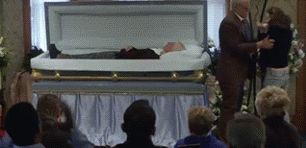Establishing shot (ELS) : it establishes the setting of the scene and normally shows the type of location and mood of the scene itself.
Master shot : a continuous shot with no stops or cuts throughout. It allows for swooping and fluid shots setting the pace and tone of the scene.
Close up (CU): the shot concentrates on a single object rather than multiple for example someone's face. This is often used to create tension or capture a reaction or action even of a person or object in the shot.
Mid shot: similar to a close up, mid shots show more of the object for example rather than someone's face, the shot is of the waist up. It gives the audience more of a clear shot of the scene and details such as clothing without distorting the view of the character's action or face.

Wide shot: similar to the last, this shot is most like a long shot but as the name suggests, a wider shot that reveals more of the rest of the scene without the need to be further away. It gives the audience to see more of the setting in the scene without compromising their attention to the scene's focal point.
Long shot: a shot taken from a far distance from the scene's focal point revealing more of the scene and context to the audience. In this example the focal point is the coffin.

Bird's eye view: is a shot taken from above the subject to give the audience a view of the landscape around the scene and what it appears like from the above. This view is strange and often eerie due to the unnatural feeling of flight.
Point of view shot (POV): is taken from the perspective of a person or an object to make the audience connect with it/them more by being in their shoes or alternatively for the audience to connect with the subject interacting with the camera.
Extreme close up: this is an extreme version of the conventional close up focusing on more minute things like an eye or fingers etc. This allows the actors (actor in this example) to exploit micro-expressions that allow the audience to see subtle changes in tone in the single shot.
Extreme long shot: this is the opposite of an extreme close up being very far away rather than very zoomed in. It allows the audience to view the whole scene with ease focusing on the bigger picture rather than the smaller details.
Low angle shot: this type of shot is taken from below the object or person of interest in the scene. It creates a different and unique perspective allowing the audience to see another side to the scene.
Eye level shot: this shot is taken at eye level of the person of interest and as the name suggests only works at eye level. It increases the impact of a characters reaction to an action in the scene.
Two shot: this is where two characters are in the same shot. This allows the audience to see the reactions of two characters, an interaction between the two or rather one talking with another listening on.

Aerial Shot: this is a shot taken from an elevated position in the air thus the name. They are not cut and dry so often blend into the establishing shot to preview a scene's setting and mood. They also blend with master shots and in fact the example given is also technically as panning shot.
Pan Shot: the pan shot is a shot that literally pans across a scene like a master shot. In one continual shot, the camera drifts across revealing the setting, characters and other focal objects/points.This gives the audience a wide range of things to focus on while not distracting from the director's intended focal point.
No comments:
Post a Comment